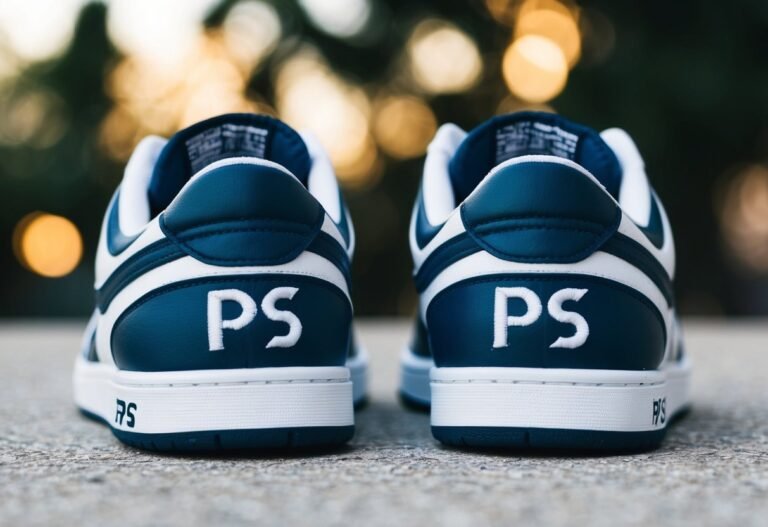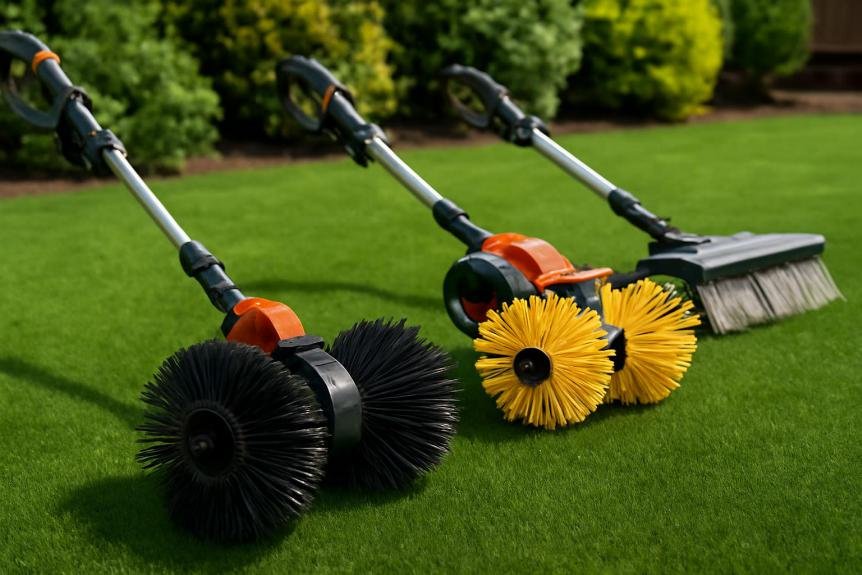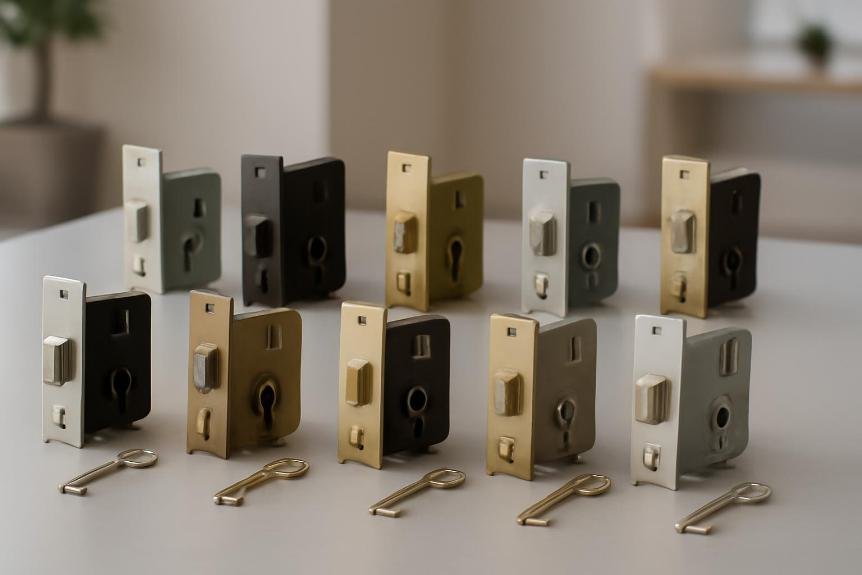Choosing the Best Footwear: Are Running Shoes Good for Working Out?
When I first started my fitness journey, one question kept popping up in my mind: Are running shoes good for working out? It seemed like a simple enough question, but as I dove deeper, I realized there’s a lot more to it than meets the eye.
Choosing the right footwear is crucial, not just for comfort, but for preventing injuries and enhancing performance. I’ve learned through experience and research that while running shoes are designed for forward motion, working out often involves a variety of movements. Let’s explore whether running shoes can truly keep up with the demands of a diverse workout regimen.
Key Takeaways
- Running shoes provide essential cushioning, supporting joints during high-impact activities and offering protection against injuries. This makes them suitable for various workouts beyond running.
- They offer stability for forward motion but may lack sufficient lateral support for activities requiring side-to-side movements, such as tennis or basketball, which could increase the risk of injuries.
- The versatility of running shoes, combining features like breathability, flexibility, and durability, makes them a practical choice for a wide range of workouts, saving space and money on specialized footwear.
- For weightlifting and exercises requiring a strong connection to the ground, the cushioning in running shoes can be a drawback, leading enthusiasts to seek out alternatives with thinner soles.
- When choosing workout shoes, it’s crucial to consider your specific activities and needs, such as cushioning for high-impact workouts or stability for multidirectional movements, ensuring enhanced performance and reduced injury risk.
- Incorporating various types of shoes into your fitness regime, based on the workout of the day, can extend the life of your footwear while providing optimal support and safety during exercises.
Benefits of Running Shoes for Working Out

When we delve into the advantages of using running shoes for general workouts, several key benefits emerge, underpinning their versatility beyond just running. My focus has always been on how my gear can enhance my workout experience, and running shoes, I’ve found, contribute significantly in this area.
Firstly, cushioning in running shoes is a notable benefit. Designed to absorb the impact that comes from foot strikes on hard surfaces, this cushioning can also aid in reducing the stress on joints during high-impact workouts. Whether I’m jumping, running, or engaging in dynamic movements, the cushioning in running shoes helps protect my joints from the constant pounding.
Another aspect I appreciate is the support running shoes offer. Most running shoes are designed to provide stability for the foot through various motions. This stability is crucial not just for running but also for workout activities that involve lateral and mixed movements. I’ve noticed that with the right running shoes, my feet feel more secure, and there’s a noticeable reduction in the risk of ankle rolls or sudden slips.
The breathability of running shoes is another factor that can’t be overlooked. Working out can get intense, and feet tend to sweat, leading to discomfort and sometimes even blisters. The materials used in most running shoes are designed to allow airflow, keeping the feet cooler and reducing moisture buildup. This feature has often made my workouts more comfortable, especially during longer sessions.
Lastly, versatility is a huge advantage. While running shoes are tailored for forward motion, their design often accommodates a range of activities, making them a practical choice for those who combine running with other forms of exercise. I’ve found that having a pair of running shoes reduces the need for multiple specialty shoes, simplifying my workout preparation and ultimately saving me money and space.
Incorporating running shoes into a variety of workouts has not only enhanced my performance but also minimized my discomfort and injury risk. The design elements inherent in running shoes—meant to tackle the rigors of running—have proven equally beneficial in supporting a wide range of physical activities.
Drawbacks of Using Running Shoes for Other Workouts

While running shoes offer numerous benefits for a variety of workouts, it’s crucial to address that they might not always be the perfect fit for every type of exercise. Understanding the limitations can help fitness enthusiasts make informed decisions about their footwear, ensuring they maximize their performance while minimizing the risk of injury.
One significant drawback I’ve noticed is lack of lateral support. Running shoes are designed with the forward motion in mind, which means they often fall short in providing the necessary support for side-to-side movements. This is especially concerning for activities such as tennis or basketball, where quick lateral movements are essential. Without this support, the risk of rolling an ankle or experiencing a similar injury increases.
Another issue involves the sole thickness. Running shoes are renowned for their cushioning to absorb impact during runs. However, this thick sole can reduce the sense of connection to the ground needed in other workouts like weightlifting. This disconnect hinders the ability to perform exercises with a solid foundation, affecting balance and power. For activities that require a grounded feel, such as deadlifts or squats, a thinner-soled shoe might be more appropriate.
Lastly, the durability of running shoes when used for non-running activities could lead to quicker wear and tear. The materials and design elements that make running shoes ideal for the road or trail don’t necessarily hold up well under the abrasive conditions of a gym floor or the repetitive impact of high-intensity interval training (HIIT). This can mean that running shoes might need to be replaced more frequently if used as a catch-all workout shoe, raising the long-term costs for the wearer.
Despite these drawbacks, it’s vital to weigh the pros and cons based on personal workout routines and preferences. Identifying the primary activities in one’s fitness regimen can guide the decision towards finding the best footwear solution, balancing between the benefits provided by running shoes and their limitations in other workout scenarios.
Types of Workouts Compatible with Running Shoes

When I dive into the compatibility of running shoes with various workouts, it’s essential to note that not all exercises are off-limits. In fact, there are specific types of workouts where running shoes can shine, offering the right blend of support, cushioning, and versatility.
Cardio Workouts
Running shoes are tailor-made for cardio-focused routines. Whether I’m hitting the treadmill, engaging in outdoor jogging, or stepping onto the elliptical, the cushioning in running shoes absorbs impact efficiently. This is crucial for protecting my joints from the repeated stress associated with high-impact cardio. The lightweight design also keeps me from feeling weighed down, making my cardio sessions more effective and enjoyable.
Basic Strength Training
When I talk about basic strength training, I’m referring to exercises that focus on controlled movements without requiring heavy weights. For these types of workouts, running shoes provide sufficient support and stability. Exercises like bodyweight squats, lunges, and light dumbbell work fall into this category. The cushioning in running shoes helps in distributing weight evenly, which can be beneficial for beginners focusing on form and technique.
Light Cross-Training
Light cross-training activities that mix elements of cardio with basic strength and flexibility exercises are also compatible with running shoes. Activities such as low-impact aerobics, beginner HIIT sessions that don’t involve complex, multidirectional movements, or basic boot camp classes can be performed with running shoes. Their versatility in handling a mix of low to moderate intensity exercises makes them a reasonable choice for workouts that don’t fit neatly into a single category.
Understanding the limitations and strengths of running shoes has guided me in choosing the right footwear for my workout routine. While they’re not a one-size-fits-all solution, running shoes can be a good fit for specific activities, ensuring I get the most out of my fitness regime without compromising on comfort or injury prevention.
Tips for Choosing the Right Shoes for Your Workouts

When it comes to selecting the perfect shoes for your workouts, understanding your own needs can make a huge difference. Throughout my experience, I’ve gathered insights and tips that can help you make an informed choice, ensuring your footwear enhances your performance and reduces the risk of injury.
Identify Your Workout Regimen
First off, it’s vital to pinpoint the types of activities you primarily engage in. Are you a running enthusiast who occasionally dabbles in cross-training, or maybe you’re someone who’s more into high-intensity interval training (HIIT)? The diversity in workouts demands different shoe characteristics. For example, running shoes offer excellent cushioning and forward motion support but may lack the stability required for lateral movements found in HIIT.
Consider Shoe Features
Each workout shoe boasts a variety of features designed to support specific activities. Here are a few key aspects to consider:
- Cushioning: Essential for activities involving high impact on hard surfaces, cushioning absorbs shock, offering protection to your joints.
- Stability: Look for shoes that provide support for side-to-side movements, crucial for activities like aerobics or tennis.
- Durability: If your routine includes a lot of outdoor activities or uses abrasive surfaces, finding shoes with tough, durable soles is a must.
- Flexibility: Needed for a wide range of movements, especially in activities like yoga or Pilates, where foot flexibility is key.
Try Before You Buy
Never underestimate the power of a good fit. Shoes that are too tight or too loose can lead to discomfort and even injury over time. I always recommend trying shoes on in the afternoon or evening, as feet tend to swell over the course of the day. This ensures the fit is comfortable and accommodates natural foot expansion. Always wear the type of socks you’d wear during your workouts when trying on new shoes, as this can affect the fit.
Rotate Your Shoes
Having a couple of pairs that you can rotate will not only extend the life of each pair but also allows you to choose footwear that’s best suited for your activity on any given day. This strategy has served me well, preventing wear and tear while ensuring I always have the right support for my workouts.
Conclusion
Choosing the right shoes for your workouts isn’t just about style; it’s crucial for preventing injury and enhancing performance. By focusing on the specific features that match your activities, you’ll not only feel more comfortable but also improve your overall workout efficiency. Remember, investing time in selecting the right pair pays off in the long run, making every step of your fitness journey supportive and enjoyable. So, don’t overlook the importance of proper footwear—it’s the foundation of a successful workout regimen.
Frequently Asked Questions
How do I choose the right shoes for my workout?
Selecting the right workout shoes requires understanding your exercise regimen. Focus on shoe features like cushioning, stability, durability, and flexibility that match your specific activities.
Why is it important to try shoes before buying them?
Trying shoes before purchasing ensures a proper fit, which is crucial for comfort and injury prevention during workouts. It allows you to feel the shoe’s support and decide if it’s suitable for your activities.
Can the same pair of shoes be used for all types of workouts?
While some shoes are versatile, it’s usually best to choose footwear specifically designed for your primary workout activities. Different exercises demand different levels of support and cushioning.
How can rotating between shoe pairs benefit my workout?
Rotating between different pairs of shoes can extend their lifespan and provide optimal support for various workouts. This strategy prevents overuse of one pair and allows shoes to regain their shape between uses.












[…] One of the most critical pieces of equipment for runners is their shoes. The right pair of running shoes can help prevent injuries, provide support and cushioning, and improve […]
[…] Pegasus is one of the most popular running shoes in the market, and for a good reason. It offers excellent comfort, durability, and performance, […]